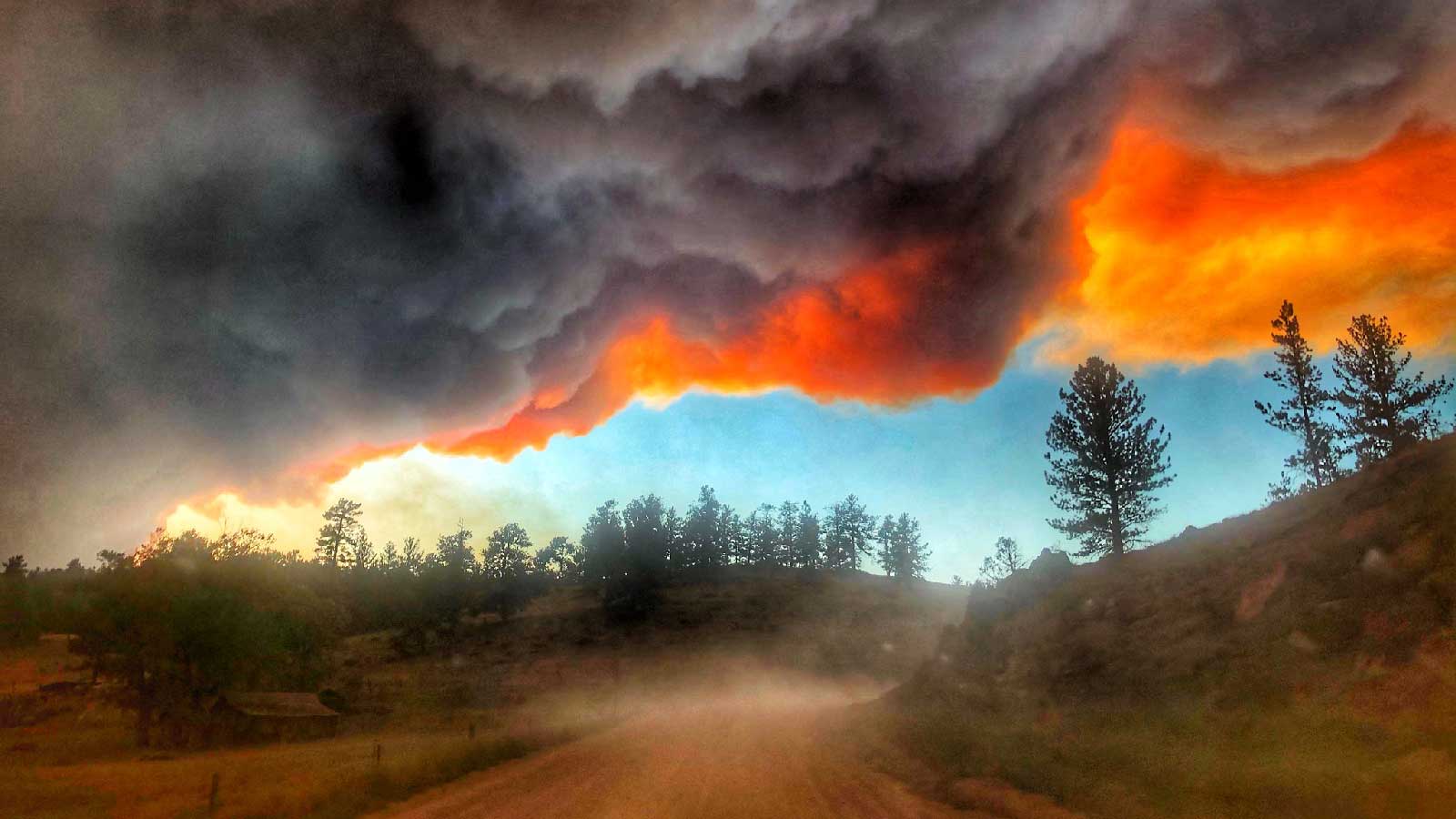The three biggest wildfires in Colorado’s recorded history roared through the state during one year in 2020, burning more than a half million acres of forests. The Cameron Peak Fire raged for close to four months, encompassing more than 208,000 acres. The East Troublesome covered 193,000 acres and the Pine Gulch fire 139,000.
Blackened trees, bare ground, and thick ash scar the landscape long after the last flames are extinguished, evidence of the lasting ways wildfires alter ecosystems and communities. Although fire is a natural part of ecosystems, climate change is linked with more frequent and intense fires. And researchers are looking into changes related to wildfires that persist into the winter and probably for years: changes in the snowpack that could ultimately make it more difficult for plants, animals, and human communities to have adequate water supplies.
Beyond the obvious effects on skiing and sledding, snowpack is vital to the region’s water supply.
“Snowmelt has been estimated to account for 75% of the total runoff in the western U.S., although estimates range from 53% to 80%,” researchers Jeremy Giovando of the U.S. Army Corps of Engineers and Jeffrey Niemann of Colorado State University noted in a 2022 Water Resources Research paper. As snow slowly melts, it recharges rivers and other water sources. When less snow accumulates, or snow melts faster, it can cause changes far beyond the forests where the flames once roared.
“Changes in the magnitude and timing of snow accumulation and melt could have trillions of dollars of economic impact in the Western U.S.,” Giovando and Niemann wrote.
‘This affects us personally’
Colorado State researcher Steven Fassnacht has witnessed the ramifications of massive climate-fueled wildfires firsthand. In 2020, when the Cameron Peak Fire was raging, Fassnacht, a professor of snow hydrology, biked to work wearing an N95 particulate respirator to protect his lungs from the thick smoke and poor air quality. When heavy rains later fell, Fassnacht recalls seeing rivers running black from ash and debris.
Now Fassnacht, along with researcher Stephanie Kampf and their Colorado State colleagues, is studying how wildfires affect the Western snowpack. Their laboratory is right in their backyard.
“This affects us personally as well,” Fassnacht says. “It affects our water resources if the city of Fort Collins can’t take water out of our local river because it’s flowing black with ash.”
How wildfires affect snowpack
Since 1984, 13% of the land area of the Western U.S. has burned in a wildfire. After an area burns, it may lack leaves and canopy cover, exposing the ground to more sun and wind, which can disturb the natural rhythm of the snow cover that has nourished the area for eons.
Fire debris, like ash and blackened pieces of vegetation, can also hasten melting by changing the albedo, or the fraction of sunlight that is reflected.
With such massive fires burning huge swaths of the area, it is vital to learn more about the implications for water resources and the ecosystem.
Fassnacht and other scientists on the team examined the effects of the Cameron Peak Fire during the first winter after the fire. They found that the snow in the burned area melted 18-24 days earlier than their model predicted it to melt.
In early June 2021, they found most of the burned areas had no snow left but discovered unburned areas with seven to 15 inches of snow remaining.
Is it wildfires, climate change, or both?
In their study, researchers Giovando and Niemann set out to differentiate the influence of climate-fueled wildfires and climate change as a whole.
“With the increase that we’ve seen in the past two decades in wildfire activity, are there impacts on the snow that we can try to understand that are separate from just the climate impacts?” Giovando explained. “I think that’s where it’s been challenging in the past.”
The scientists evaluated 45 sites within the Natural Resources Conservation Service’s Snow Telemetry Network that had been burned by fires. They matched each burned area they were going to examine with a couple of nearby, similar control sites that had not been burned.
They then noted when each burned site experienced a fire in order to compare data from before and after it burned. For example, if a fire occurred in 2002, they compared data at both the burned site and the unburned control sites before and after the fire date to provide insight into the effects of fire, climate, and the two factors combined.
They found that areas affected by both climate and wildfire had snow melt out about 14 days faster on average. Comparing the data to isolate the effects and study wildfire impacts alone, they found fires contributed to snow melting around nine days earlier.
They also found that wildfire-caused changes to seasonal snowmelt patterns can last 10 years or more after a fire.
Giovando says knowing the influence of wildfires on snowpack and water resources can help with planning.
“One of the other motivations that I have with this research is also potentially getting to the point where maybe we can have some sort of pre-fire risk identification,” Giovando says. “We can go into an area and say, ‘Well, this area, if it was to burn, may have significant changes in the snow regime.’
“From that point of view, well perhaps there’s nothing that can be done immediately about it, but it at least informs people about the understanding of risk and the risk related to water resources related to snowmelt and snowpack, and I think having that next step in identification of where significant changes might occur could be useful at least for planning purposes at the local and state level.”
With snowpack such a vital component of water availability in the West, researchers say there is a lot more to study, and information learned now can provide vital knowledge to help guide decisions in the future.
Source link


